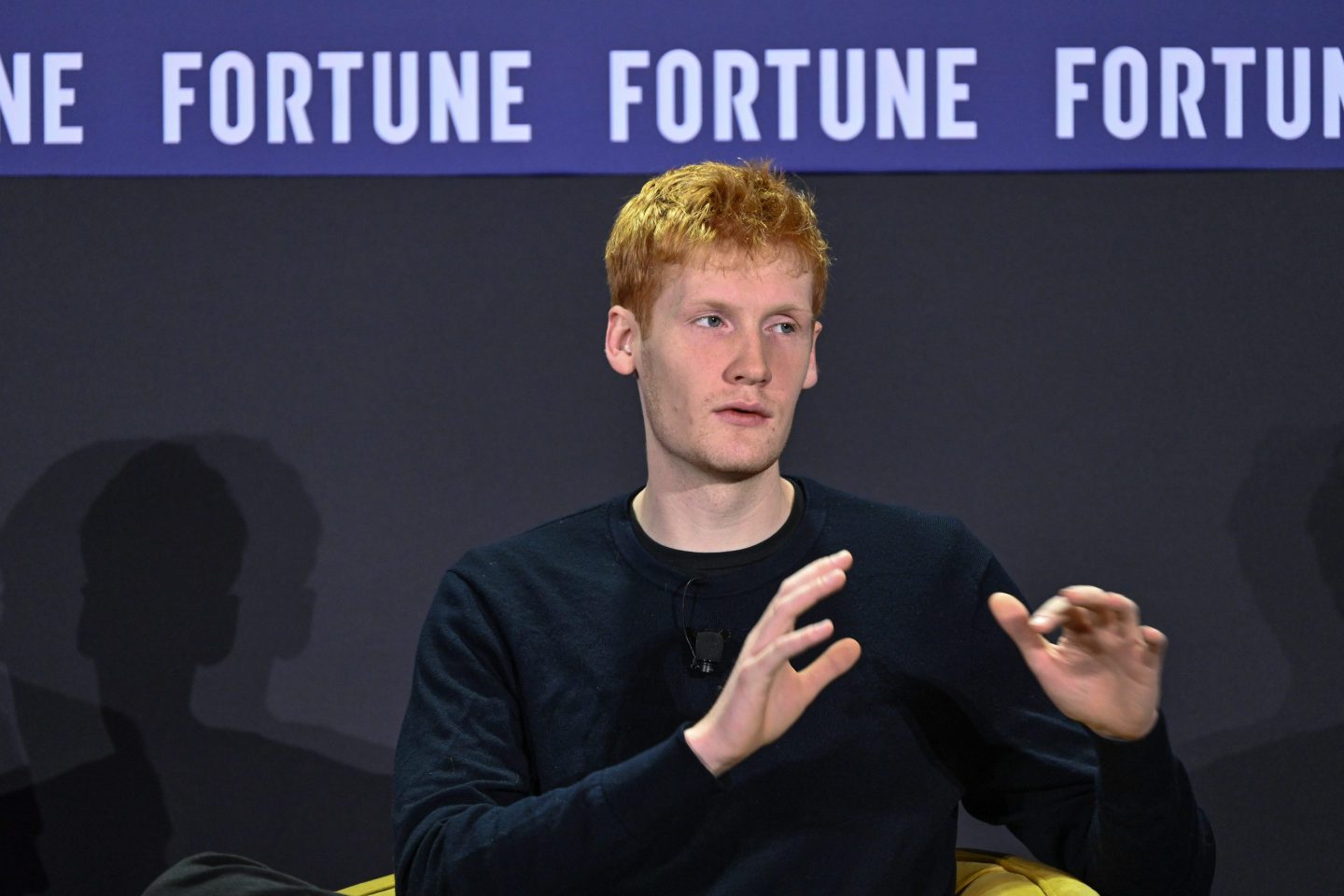When OnlyFans exploded in popularity during the pandemic, the highly lucrative gig was typically the remit of conventionally attractive models with a penchant for self-promotion. Now a growing wave of faceless, tech-savvy creators are trying to prove they can do that job just as well with AI.
AI influencers are artificial models created on image-generating websites, which have come a long way in their sophistication in recent years.
They are controlled by creators who generate images, marketing them on social media platforms and providing exclusive content to paying subscribers whom they also converse with.
It seems difficult to believe that enough people would be willing to part with their money for the privilege of interacting with a person who doesn’t actually exist.
But Will Monange, the 25-year-old boss of OnlyFans rival Fanvue, is betting on an AI-generated future of adult content.
Like OnlyFans, Fanvue isn’t limited to adult content and includes other faces like YouTube personalities. But both platforms have made their name hosting 18+ influencers, and in Fanvue’s case, the group is causing this type of stir with AI.

One-sided relationship
About a year and a half ago, Monange and his small team started to see a big jump in AI’s image-generating capabilities. It prompted them to reach out to the people behind those creations to tempt them over to Fanvue.
“If someone’s able to have a persona that they can leverage to get involved in the creator economy without having to be the person in front of the camera, we took a bet on the fact that that would likely open up to a lot of people who currently aren’t involved,” Monange told Fortune.
It’s hard to know just how successful that bet has been so far, but AI models on the platform appear to be making early progress.
Last November, the amount of money generated on Fanvue from AI models doubled from the month before. AI creators accounted for 15% of Fanvue’s total revenues that month.
One of the biggest drivers of that increase was Emily Pellegrini, a 23-year-old influencer who posts adult content to her subscribers using deepfake technology.
Fanvue says Pellegrini, one of the most popular AI models on its site, generated $23,000 in revenue in January, up from $6,000 in October.
But the faces behind these profiles are typically secretive.
AI model Hailey Lopez’s creator is an anonymous university student who made his model using the AI image-generation website Stable Diffusion after lots of experimentation.
They will spend a few hours a day creating content and chatting with Lopez’s 150 paying subscribers, raking in between $2,500 and $4,000 per month from her content.
“Never before had I worked with AI or content creation professionally,” the person said.
“From the beginning, it was just my curiosity that turned into a hobby and eventually something much bigger.”
There are many theories as to why people might choose to spend their cash on fake profiles like Pellegrini’s. Film buffs are reminded of the movie Her, in which Joaquin Phoenix’s character falls in love with a virtual assistant voiced by Scarlett Johansson.
Indeed, there has been a groundswell of people confessing their love for chatbots, even creating AI-generated boyfriends and girlfriends.
But Monange doesn’t think it’s that complicated.
“We’ve seen that the behavior is not that different,” Monange says.
“Because at the end of the day, you’re dealing with a parasocial relationship that’s been created on socials. It’s a very similar kind of interaction.
“It just so happens that the character they’re connecting with is virtual. But the behavior has been largely the same.”
Parasocial relationships, where a person develops one-way feelings for a well-known person, are pretty run-of-the-mill in our celebrity-obsessed culture, and AI optimists like Monange think it will set up bots for success.
On Lopez’s Fanvue and Instagram profiles, there is no direct mention that she’s an artificial creation, though she does describe herself as a “virtual girlfriend.”
Aitana, a Spanish AI model, took in $11,000 in one month last year.
Diana Núñez, cofounder of the influencer marketing agency The Clueless, told Fortune in November that the publicity Aitana received for being widely revealed to be AI-generated didn’t hamper her popularity.
“Even after the media revealed she was an AI creation, many followers still expressed their love for her. The key lies in crafting a relatable personality so that her followers feel a genuine connection,” Núñez said.
Hard work pays
For the models’ creators, it’s not just a case of building a conventionally attractive person and watching the money pile in.
Creators need to aggressively market their models to make them stand out, creating social media profiles and fake lives to build a personality.
According to Monange, there are not many differences between a successful creator of AI-generated content and other types of influencing, at least in terms of strategy.
“They’re growing an audience on socials with a group of people that find whatever they might be doing interesting for one reason or another. They nurture that audience and then they aggregate that audience and monetize them on a platform,” Monange says.
The Clueless’s Núñez previously told Fortune her team will post stories on Aitana’s Instagram account, like breakfast bowls and pictures of sunrises, to fabricate a life that followers can become invested in.
“It took us a few months of experimenting and trying out different looks until we finally hit the jackpot with the Aitana you see today,” Núñez about the process.
Pellegrini’s secretive creator told the Daily Mail they initially worked 14-to-16-hour days trying to create the ideal model, and now work eight hour days interacting with her fans.
Aside from creators using AI to create the ideal model, Fanvue is investing in other AI capabilities on its site that it hopes will allow creators to reduce their admin and interaction time, allowing more time to rake in extra cash.
Eventually, it could also mean that your future virtual girlfriend will involve zero human interaction at all.













